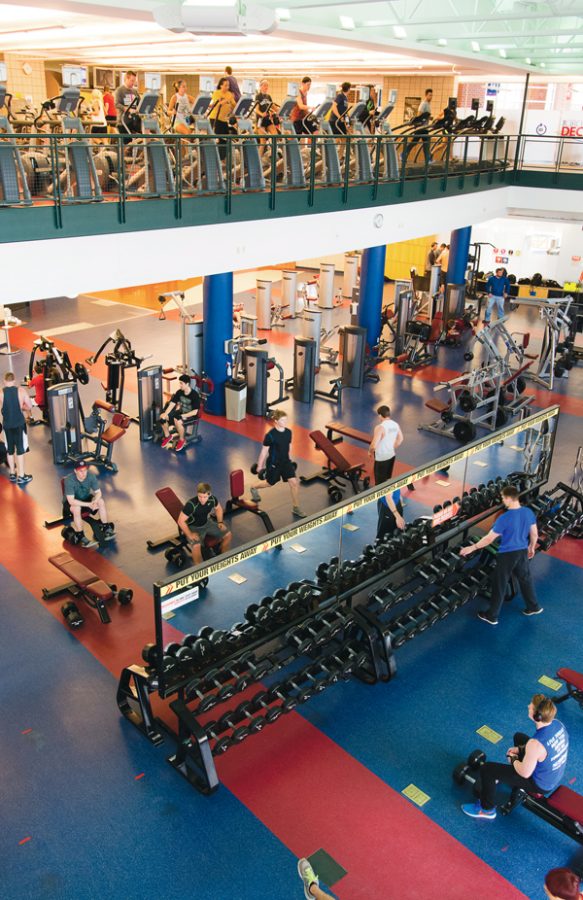Wellness Center to institute new dress code
New shirt guidelines will be put in place to prevent spread of disease
UND students, faculty and staff exercise on both levels of the Wellness Center in November of last year.
November 15, 2017
It’s a typical wintery afternoon at the University of North Dakota Wellness Center, the setting sun saturating the modern, glass-enclosed lobby with light. A sweaty student, finished with his work out for the day, walks past a prominently displayed sign next to the main desk. Ironically, his outfit, featuring a t-shirt dramatically sliced down the sides, is in flagrant disregard of the new rules posted on said sign.
Frequent users of the Wellness Center were likely surprised last week when the sign announced stricter dress code regulations for the facility, to be put into effect Jan. 1, 2018. The new dress code specifically targets upper-body garments, stating that students will no longer be allowed to wear “shirts that have an armpit gap that is less than the palm of your hand” or shirts that “expose skin below the bra line in back.”
The sign has visual aids demonstrating attire that will be frowned upon, including a woman in just a sports bra, or a sports bra and a low-hanging shirt, and a man in a modified t-shirt, cut to expose his sides or back.
The current Wellness Center dress code, outlined in the Policies, Rules and Regulations section of the Participants’ Manual, does not have any in-depth rules pertaining to upper-body clothing, only specifying that “shoes, shirts, shorts and/or pants must be worn.”
Though dress codes are often perceived as simply a way to preserve modesty, the Wellness Center has promoted this recent change as, first and foremost, a way to “reduce the risk of bacterial disease transmission.”
In 2010, the National Athletic Trainer’s Association (NATA) published an influential paper regarding the risks athletes face of contracting bacterial, fungal and viral skin infections. Although their paper was written in regards to athletes, the risks spoken about apply to all group exercise settings.
During exercise, people are “particpat(ing) in high-risk activities and have constant assaults to the integrity of their skin, making transmission that much easier,” NATA said.
According to a report by the New York Times, at any given time, one in three Americans is carrying a skin disease that can be spread to others, and more than half of the outbreaks of these infectious diseases occur in competitive athletes due to the environments they frequent.
It’s worth noting that nowhere in NATA’s guidelines is it specifically stated that people in gyms and similar settings should avoid leaving their upper torsos bare. Most guidelines focus on general hygiene and cleanliness before and after a workout, as well as the sanitation of exercise equipment. The onus is typically put on the individual rather than the facility.
The Wellness Center’s dress code has likely been put in place to minimize skin to skin contact and skin’s contact with exercise equipment, lest people fail to properly sanitize equipment they use.
Diane Newberry is the news editor for Dakota Student. She can be reached at [email protected]










